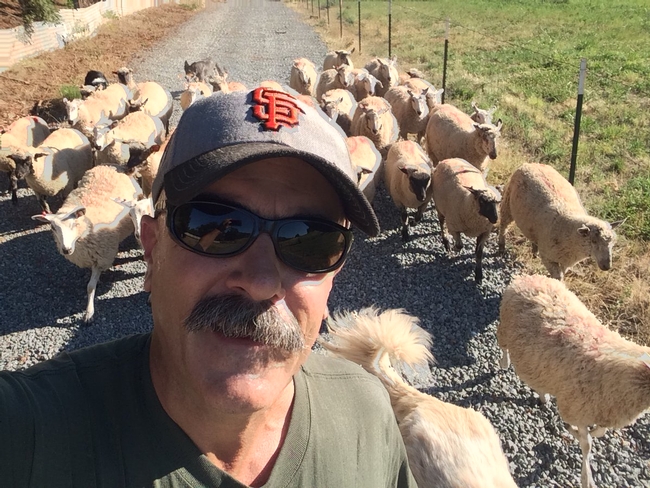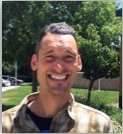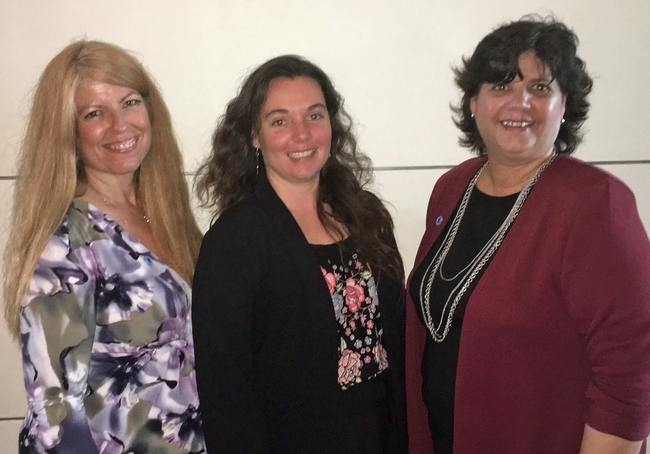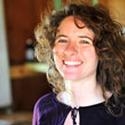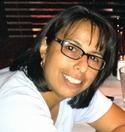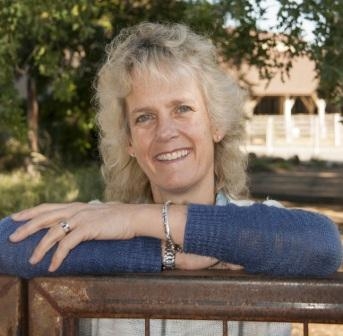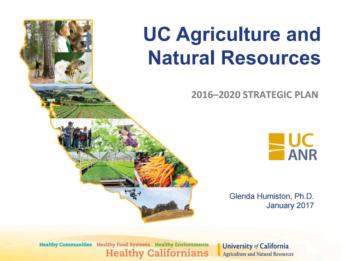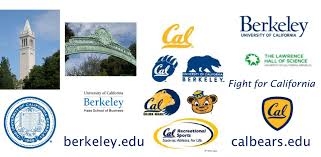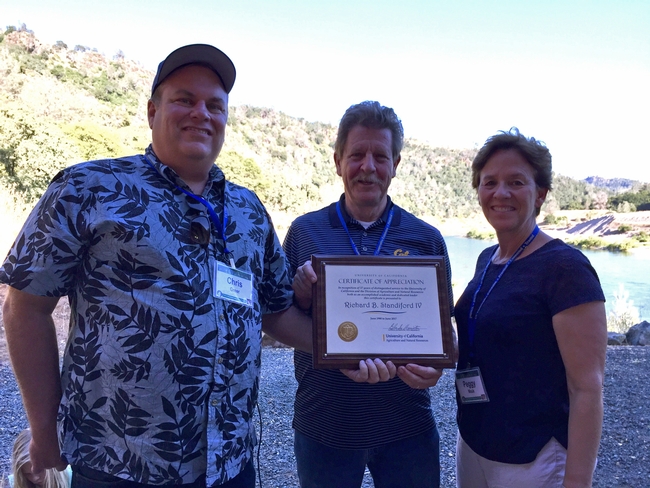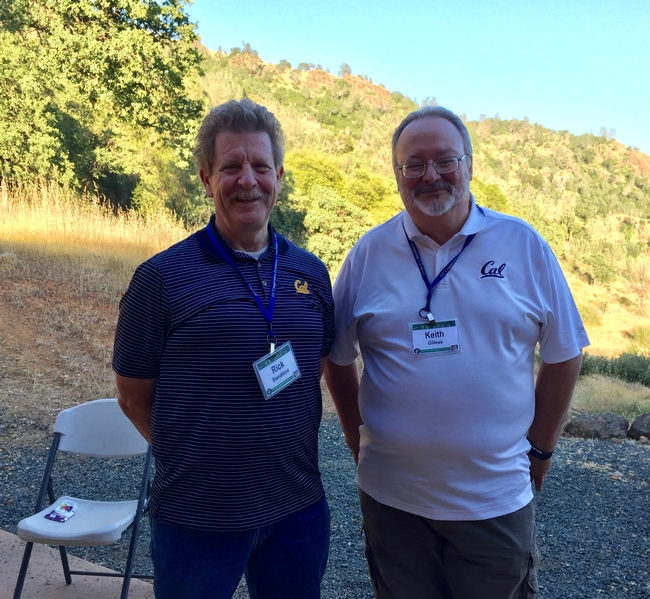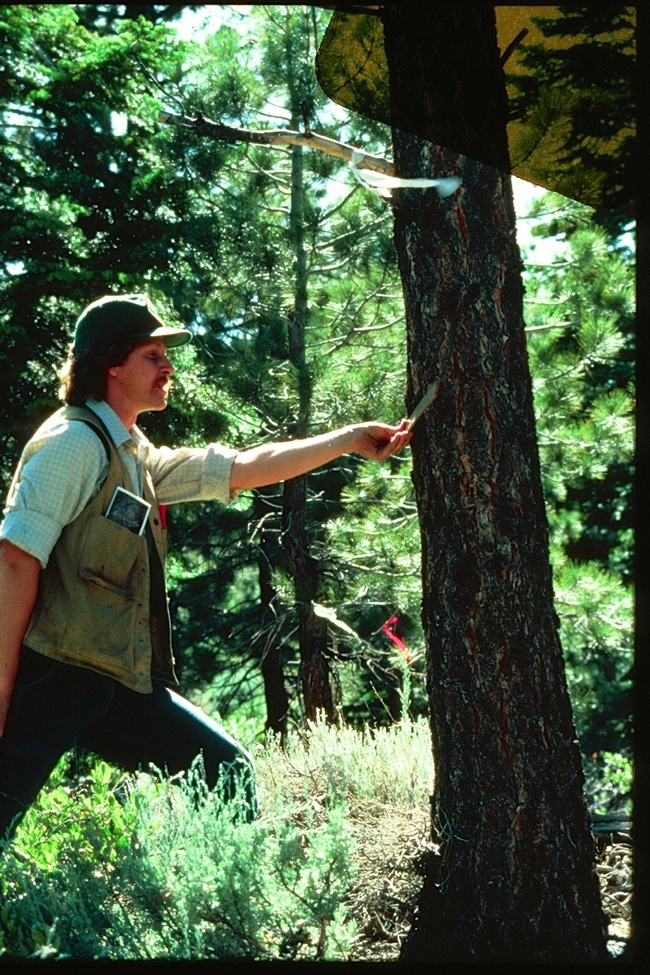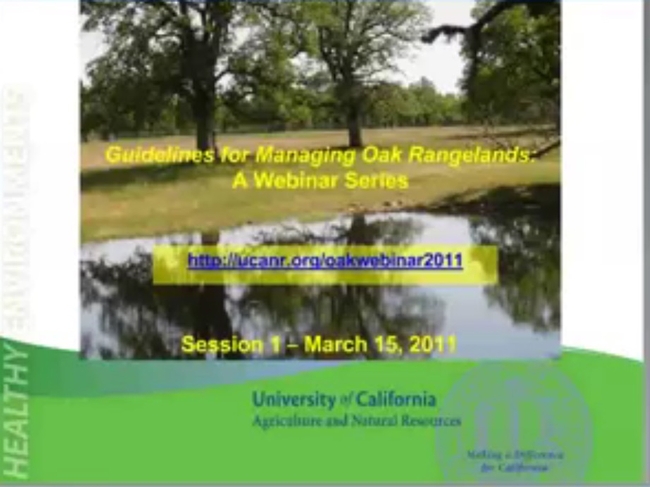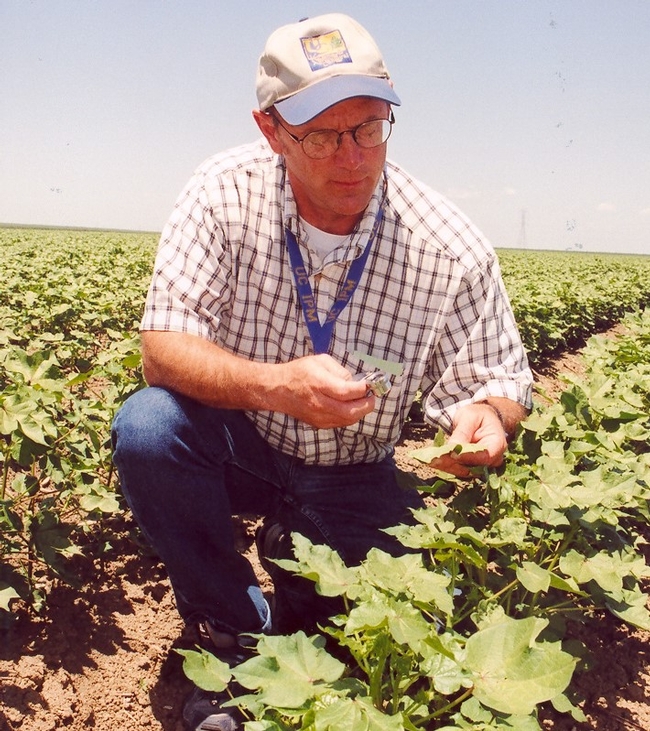Posts Tagged: Cynthia%20Kintigh
Names in the News
Macon named livestock and natural resources advisor
Daniel Macon has accepted the livestock and natural resources advisor position in Placer, Nevada, Sutter and Yuba counties, effective July 1.
Macon, who operates a small-scale commercial sheep enterprise near Auburn, brings a combination of hands-on livestock production experience and applied scientific research and education/outreach experience.
Having been the herdsman at the UC Sierra Foothill Research and Extension Center, and most recently serving as an associate specialist for rangeland science and management in the UC Davis Plant Sciences Department, Macon is a familiar face to many in ANR. He is currently collaborating on a variety of research efforts, including on-ranch impacts, management and planning horizons following California's historic drought. He has also led producer enrollment, data collection and grazing-water-nutrient management tracking for a statewide integrated research and extension project on irrigated pasture. He is also leading a long-term project that will quantify direct and indirect impacts from predators on rangeland livestock operations across northern California.
Macon has also worked for the Natural Resources Conservation Service and the California Cattlemen's Association, and was the founding executive director of the California Rangeland Trust. He is currently the vice president of the California Wool Growers Association and is a past president of the California-Pacific Section of the Society for Range Management.
Macon earned a Master of Agriculture in integrated resource management from Colorado State University and a Bachelor of Science in agricultural and managerial economics from UC Davis.
“I have finally recognized that the parts of my earlier jobs that I most enjoyed involved the things I'll be doing on a daily basis as a farm advisor - teaching and doing research,” Macon wrote in his Foothill Agrarian blog. “Along with raising sheep, I feel as though I've finally figured out what I'm supposed to do in life!”
“I have enormous shoes to fill - Roger Ingram and Glenn Nader, who have proceeded me in these four counties, were incredibly productive and successful advisors.”
Macon will be based in the Auburn office and can be reached at (530) 889-7385 and dmacon@ucanr.edu. Follow him on Twitter at @flyingmulefarm and Instagram at @flyingmule.
Spinelli named vegetable and irrigation advisor
Gerardo “Gerry” Spinelli joined UCCE on April 17 as an area vegetable production and irrigation advisor for Stanislaus, San Joaquin and Merced counties.
Before joining UCCE, Spinelli had worked as agricultural specialist for the Resource Conservation District of Santa Cruz County since 2015. He performed irrigation system evaluations, implemented an irrigation water and soil moisture monitoring project, and provided recommendations for irrigation management and improvements in irrigation systems, assisting the strawberry, lettuce, apple, vegetable and blackberry industries.
From 2010 to 2015, Spinelli was a graduate student researcher in the Plant Sciences Department at UC Davis, where his research focused on water stress and water use at the leaf and canopy level in almond orchards in California.
Spinelli grew up on an olive and vegetable farm on the hills overlooking Florence, Italy. He left Italy in 2007 to work in Honduras on an irrigation development project providing technical assistance for smallholder corn and watermelon growers, and in London designing and installing landscape irrigation systems. He also lived in Lebanon, where he introduced integrated pest management in apple and olive production, rebuilt irrigation channels for tobacco and vegetable growers, implemented a queen bee breeding program and built sewage lines for the Wavel refugee camp. In addition to English, he speaks French, Italian and Arabic.
Spinelli earned a Ph.D. in horticulture and agronomy and a M.S. in international agricultural development from UC Davis and a M.S. in tropical agricultural development and a B.S. in agricultural sciences and technologies from the University of Florence, Italy.
Based in Modesto, he can be reached at (209) 525-6806, (530) 304-3738 (cell) and gspinelli@ucanr.edu.
Vela to lead News and Information Outreach in Spanish
Ricardo Vela joined UC ANR as manager of News and Information Outreach in Spanish (NOS) on May 15. As NOS manager, he oversees production of UC ANR radio, video and news releases for Spanish-language news media and will advise academics on effective outreach to the Latino community.
Before joining UC, Vela was the news director and main anchor for KVER-TV Univision in Palm Springs. Vela launched his journalism career in the third grade by starting a school newspaper in Ciudad Juarez, Mexico. He was the news correspondent for Univision News in Los Angeles bureau for over 10 years, then moved to San Diego where he was the news anchor/producer for the Univision affiliate for 14 years. In 2014, Vela moved to his hometown of El Paso, Texas, to be the news anchor/producer for KTDO-Telemundo 48.
In 1992, he won an Emmy for his story about a Latino family coping with their last days before dying of AIDS and preparing their children for their loss. In 2005, Vela received an Emmy for a news feature, “Los Trovadores del Siglo 21.”
In 2001, Hispanic Business Magazine named Vela one of the 100 most influential Hispanic journalists in the country for his journalistic vision to voice the needs of the Hispanic community in San Diego. He expanded his commitment to the community by writing a weekly column for the El Latino newspaper about issues pertinent to Hispanics in San Diego. In 2004, The San Diego Press Club honored his newspaper column and morning radio talk show, Voces de San Diego, which had been on the air only a few months, and he was named one of the 10 most influential Latinos in San Diego by Tijuana's Frontera newspaper.
On Feb. 28, 2006, the City of San Diego honored him with a proclamation of “Ricardo Vela Day” for his contributions to the Latino community through his radio show.
Vela earned a bachelor's degree in business administration at Instituto Tecnologico de Ciudad Juarez, Mexico, and a bachelor's degree in mass communications/journalism at the University of Texas at El Paso. He also studied film and video at the Art institute in Chicago.
Vela is based at the Rubidoux Building in Riverside and can be reached at (951) 781-2151 and ricardo.vela@ucr.edu.
ANR women graduate from UC Women's Initiative Program
Valerie Borel, Jan Gonzales, Margaret Lloyd, Robin Sanchez and Katherine Soule recently graduated from the UC Women's Initiative for Professional Development.
They were among a group of mid-career women, both staff and faculty, selected from all UC locations to participate in this special program created to improve the professional development and advancement of women at UC.
The four-session program was designed by the Systemwide Advisory Committee on the Status of Women and UC Systemwide Talent Management, and delivered by CORO, a nonprofit leadership development organization.
The UC Women's Initiative's four in-person, interactive, multi-day sessions have been designed to:
- Cultivate a vibrant, professional network of women that spans the UC system
- Give women access to top UC leaders—women and men—so they can interview and learn from them about their diverse leadership approaches and journeys
- Strengthen participants' skills and confidence through hands-on practice with a range of tools and skills in the areas of:
- Professional development and impact
- Strategic relationship building
- Developing and delivering a compelling narrative regarding one's professional accomplishments and vision
- Negotiating at work
- Peer coaching
The program is designed for mid-career women, both faculty and staff, who demonstrate the potential to advance their careers at UC. Last year, Katherine Webb-Martinez and Tunnyalee Martin participated in the training.
For more information about the program, visit the UC Women's Initiative website at http://ucop.edu/human-resources/womens-initiative.
Van Eenennaam tapped for national research strategy
Alison Van Eenennaam, UCCE genomics and biotechnology specialist in the Department of Animal Science at UC Davis, has been named to a national committee to lead the development of an innovative strategy for the future of food and agricultural research.
The National Academies of Sciences, Engineering and Medicine sought nominations for scientific leaders across various disciplines to be part of an activity that will develop a compelling strategy for food and agricultural research for the next decade and beyond. Nominations were sought for transformational thinkers across the scientific enterprise (including but not exclusively limited to the agricultural sciences) to be considered for the study committee. These include individuals on the frontier of scientific disciplines that would be of value but are not traditionally associated with food and agriculture.
In addressing its statement of task, the study committee will offer a strategic and ambitious view of the opportunities for fundamental and applied interdisciplinary research that is both grounded by a deep scientific understanding of food and agricultural challenges and elevated by the breakthrough potential of insights and tools from newly converging disciplines in the food and agriculture setting.
Susan Wessler, the Neil A. and Rochelle A. Campbell Presidential Chair for Innovations in Science Education and distinguished professor of genetics at UC Riverside, is co-chair of the committee.
For more information about the study, visit http://nas-sites.org/dels/studies/agricultural-science-breakthroughs/who-we-are-agriculture-breakthroughs/committee.
UC ANR's Strategic Plan has its own website
A stand-alone website devoted to UC ANR's Strategic Plan is now live and can be accessed in various ways:
- Direct link: http://ucanr.edu/sites/anrstaff/2016-2020_Strategic_Plan/
- “Squished” link: http://ucanr.edu/strategicplan
- Mini URL: http://ucanr.edu/p/58630
- Keyword search of any ANR website for "strategic plan."
The website is designed to give UC ANR academics and staff updated information on the plan and its ongoing implementation, and their role in reaching the plan's goals. It's also a place where stakeholders can offer feedback to leadership. Please let your stakeholders know about the site.
For more information about the Strategic Plan, read AVP Wendy Powers' blog post Updates on implementation of the strategic plan.
Should you be using a new UC ANR logo? Probably not
This new look for the top-level brand is being rolled out slowly with digital implementation first. We know that folks have invested in signage, shirts, printed collateral materials and other durable items, and we're not going to ask that any of these items be changed. Additionally, the Brand Toolkit contains close to 1,000 assets—everything from logos to business cards to PowerPoint templates. Updating those assets is a daunting task and a challenging brand management issue.
This multi-level brand approach is not unprecedented. A good example is how UC Berkeley handles their brand package. There's a high-level brand for the campus and other sub-brands, like the script Cal and iterations of the Golden Bear. Each has a place in the brand family. This is especially applicable for well-recognized, even well-loved brands with a lot of brand equity—like the script Cal, the vintage bear, or even 4-H, UCCE, Master Gardener and others in our own brand package.
Over the coming weeks, as we roll out the re-design of the high-level pages of the website, you'll see the new ANR brand in action. If you need to order durable items there is no need to delay; feel free to use the current brand packages available in the Brand Toolkit. Future changes to the sub-brand packages will be minimal and won't be incorporated into the sub-brand packages for at least 8 to 12 months.
Standiford retires from 37-year UC ANR career
Wrapping up a remarkable 37-year career with UC ANR, Richard B. Standiford IV, UC Cooperative Extension forest management specialist at UC Berkeley, will retire June 30.
In addition to being a highly regarded forestry expert, Standiford served as UC ANR's associate vice president from 2005 to 2009, and provided stability for the division as acting vice president during the 11-month transition from Reg Gomes stepping down to retire until Daniel Dooley succeeded him as vice president in 2008.
“There are a select few individuals who both excel at research, teaching, service and outreach and can lead and motivate others to try to do the same. Rick belongs to this rarest subspecies of academic,” said Keith Gilless, dean of the College of Natural Resources at UC Berkeley, who has worked with Standiford for 35 years.
In 1980, after working two years as a research and extension forester at Purdue University, Standiford joined UC Cooperative Extension at UC Berkeley. The New Jersey native developed a research and extension program focused on sound management of California's forests, rangelands and other natural resources.
Standiford “personifies all that is best about Cooperative Extension,” said Maggi Kelly, director of the UC ANR Statewide Informatics and Geographic Information Systems Program, professor and Cooperative Extension specialist in the Department of Environmental Sciences, Policy & Management at UC Berkeley.
His legacy in Cooperative Extension continued to grow as associate vice president of ANR, says Peggy Mauk, former director for Central Coast and South Region.
“Rick empowered people, empowered regional directors and county directors to implement programs for the betterment of California,” Mauk said. “Rick had the ability to bridge the gap between administrative concepts and regional (county) implementation. He wanted to know how higher level decisions would impact ANR's county-based personnel and programs and then adjust for those impacts. Above all, Rick valued people and positions, and supported the ANR mission.”
He also has provided leadership for county Cooperative Extension advisors developing programs in forestry and conservation of oak woodlands.
“Rick has a tremendous ability to pull people together,” said Yana Valachovic, UCCE director and forest advisor for Humboldt and Del Norte counties, noting his leadership in getting people to work together to contain sudden oak death disease. “It takes passion, vision and an ability to communicate effectively.”
While tackling the emerging forest disease, Standiford also devoted time to mentoring young scientists.
“Early in 2000, Rick bounced into my office with the news that he had found emergency funds to study the disease, and had assembled a team of pathologists, ecologists, arborists, homeowners and forest managers to attack the problem,” said Kelly, a remote-sensing expert. “Rick asked if I would be able to use the money to fly to Marin County and develop critical baseline maps of the nascent disease. I was, and I did, and that generosity and foresight launched my applied research and extension program at Berkeley.”
“The disease was subsequently named Sudden Oak Death, and in 2015 ANR was been given a nationwide award in extension for its timely, quality, impactful multidisciplinary approach to the disease,” Kelly said, “and it all started with Rick.”
Standiford said working with people was the part of his career he enjoyed most. He recalled driving with UCCE colleagues to Mariposa County to deliver a workshop on managing oaks.
“The sun was setting, it's pretty dark, pretty desolate and we're wondering, ‘Is anybody going to be at the workshop?'” Standiford said. “At the grange hall in Catheys Valley, there's a ton of pickup trucks and cars. Inside, everybody is excited that the university has shown up to help figure out how to manage their trees. That's what my job has been about. It was always a lot of fun.”
An early adopter of technology, Standiford has used webinars to teach oak woodland management from a distance. While acknowledging the convenience of virtual meetings, he said, “I hope we don't lose sight of the value of personal contact.”
From 1985 to 1987, Standiford served as ANR program director for natural resources, leading efforts in forestry, wood products, wildlife and range management.
From 1988 to 1999, Standiford led collaboration among UC, the California Department of Forestry and Fire Protection, and the California Department of Fish and Game for the ANR statewide Integrated Hardwood Range Management Program, which was established in 1986 by the California Legislature to address poor oak regeneration and ongoing woodland losses. The program continued for 23 years until its budget was cut in 2009.
At UC Berkeley, he coordinated all Cooperative Extension activities in the Department of Forestry and Resource Management from 1989 to 1993, served as associate dean for forestry and director of the Center for Forestry from 1998 to 2002 in the College of Natural Resources, and oversaw the College's capital projects program, space planning and research infrastructure as associate dean for forestry and capital projects from 2002 to 2004.
In retirement, Standiford plans to teach at the UC forestry camp and remain active with the Society of American Foresters. He also plans to travel with his wife, Judy, and spend time coaching and camping with his five grandchildren
“I have been blessed with the most wonderful job in the world,” Standiford said. “The best part was the honor of working with such wonderful people on campus, in the counties, and the wide group of landowners and managers who taught me so much.”
Long-time UC Integrated Pest Management advisor Pete Goodell retires June 30
A 36-year career in science led UC Cooperative Extension Integrated Pest Management advisor Pete Goodell to a gratifying conclusion. He found that technical pest management skills are critical, but it's the people skills he has developed over time that were key to bringing about change.
Goodell retires June 30 from what he described as a fulfilling and challenging career that he entered by pure happenstance. His role as a researcher, leader and teacher turned out to be the perfect profession for someone with his interests, skills and passion.
Unable to find a job in forestry after completing an ecology degree at California State University, San Francisco, Goodell answered an ad he saw on a UC Berkeley bulletin board seeking staff to collect insect samples in a hot Los Baños cotton field.
“It wasn't what I wanted, but it got me outdoors and it was very satisfying,” Goodell said. “I was able to use a lot of what I learned in field biology at San Francisco State.”
The job opened the door into the world of agricultural entomology, a scientific field that impacts the most basic of human endeavors, food production. Captivated by the opportunity to make a difference, Goodell continued his education at UC Riverside, where he studied nematology, entomology and plant pathology, earning masters' and doctorate degrees. Just as his education wound down in the early 1980s, there were rumblings in the California State Legislature about the implementation of new regulations aimed at reducing pesticide use.
Jim Farrar, director of the Statewide UC IPM Program, attributed a large part the program's success to Goodell's contributions.
“Pete delivered innovative IPM programs ranging from technical pest sampling strategies to the social science of how people learn and adopt new pest management techniques,” Farrar said.
In the early days, the program focused on producing IPM manuals for the crops that were the highest pesticide users. Teams were established to research, collect and deliver best practices for alfalfa, grapes, walnuts, almonds, rice, cotton, tomatoes and citrus pest management.
“In the UC IPM program we worked together across disciplines, so we got a lot done,” Goodell said.
Today a library of integrated pest management books, leaflets, training resources, websites and blogs deliver UC's best information on managing pests using safe and effective techniques and strategies that protect people and the environment.
The list of Goodell's accomplishments and awards is long. To name just a few, his efforts have been recognized with two Distinguished Service Awards from UC Agriculture and Natural Resources, a Lifetime Achievement Award from the Association of Applied IPM Ecologists, and even being named by US News and World Report as one of the “Ten Most Indispensable Americans.”
One of the concepts that has defined his career is regional integrated pest management, which pushes the management of pests beyond the boundaries of individual farms.
“When you have a mobile insect, one farmer's decisions can impact the entire community,” Goodell said. “Working together, you can mitigate that problem.”
Goodell worked closely with farmers in the Tulare Lake basin to implement a regional IPM management system. Goodell brought together 10 growers, each managing several hundred thousand acres of farmland, to collaborate on the Lygus bug problem in cotton.
“Lygus bugs build up in safflower. When the safflower is harvested, all the bugs move into cotton and you have to spray pesticides,” Goodell said.
Safflower is an important part of the crop rotation system, so Goodell got the farmers together to decide on a management scheme.
“One acre of safflower can infest 10 acres of cotton. If you spray the safflower, you reduce the area sprayed by a factor of 10,” he said. “The growers all agreed to spray safflower on the same day, before the Lygus bugs get their wings and lay eggs. This reduced pesticide use considerably.”
The coordination was a complex process. “I was privileged to work with such a motivated and engaged community of farmers,” Goodell said.
The same kind of regional management was proposed for a group of growers near Firebaugh, but Goodell found it nearly impossible.
“In the Firebaugh area, numerous farmers with small fields and tremendous diversity of crops was an insurmountable challenge,” Goodell said. “But in the Tulare Lake basin, we showed that regional IPM can work. This is a model that can be used for other insect and disease problems in the future, such as Asian citrus psyllid and glassy winged sharpshooter.”
Goodell has applied for emeritus status to continue his work in collaborative entomology during retirement. He and his colleagues plan to bring together a diverse group of Californians to enhance understanding of pests, pesticides, and integrated pest management.
“We'll have farmers, pest control advisers, farmworkers, day care operators and managers of open areas like golf courses and public parks all in the same room,” Goodell said. “We want to understand where we need our research to be going, and how to bridge the gap between those who think all pesticides are bad and those who believe pesticides are critical to their businesses.”
In retirement, Goodell will also pursue his passion for the Great Outdoors. He plans to hike the John Muir Trail one segment at a time, and visit the National Parks in the western United States in style, by staying at historical lodges.
Getting reservations won't be a problem. “We have a very open calendar,” Goodell said.

